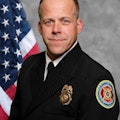For many fire departments, the public information officer (PIO) position might be an additional duty for a chief officer or a random employee who’s picked based on availability or is a designated position. Personnel who are pushed in front of the cameras usually are sent to a class that’s designed to offer some familiarity with media relations.
I became the PIO when I became the fire marshal for my department. I had very little experience in communications. During my first interview, I remember thinking that I should have some sort of rigid checklist to track times, places, actions and whatever else I might be expected to offer. I took the basic PIO course that my state offers, but every situation was different, and I slowly learned a few basic techniques.
Media inquiries
The basic duties of a PIO generally fall into two categories: responding to media inquiries that concern emergency incidents and offering information about safety practices or events in the community. When responding to inquiries, it’s important to know what to say and what not to say. Basic information to offer to the media includes:
- Time
- Location
- Type of structure or environment
- Is the fire or hazard under control?
- Are there known injuries?
- Does the incident pose a threat to the immediate community?
- Is the incident under investigation? (In the case of a fire, it almost always is until it isn’t.)
Be cautious not to offer information that’s an assumption or wasn’t confirmed. You’ll lose credibility very quickly if you give inaccurate information. It’s OK to not know everything. Reporters will attempt to gather as much information as they possibly can. That’s their job. I learned to only share facts and to avoid speculation. As we all know, in this line of work, every incident is unique.
Main message
For education-driven interviews, the first and most important lesson that I learned was to always discuss my main message with a reporter before the interview. Now, this might sound obvious, but I soon discovered after watching reports for which I was interviewed that the brief portions of my remarks that were shown on TV weren’t on target with my intended message. It annoyed me. I came to the realization that reporters are communications experts who conduct interviews with people from a variety of occupations and, therefore, might not understand what’s important in our line of work. Choosing the main message is the job of the PIO.
For recorded interviews, discussing my main message was imperative, but for live interviews, it was a way to stay on track. Live interviews can be nerve racking, because you can’t stop the interview if you lose your train of thought or want to change the message that you’re delivering. Furthermore, very often during live interviews, you might feel as though you’re running out of time, and it can be easy to forget all of the talking points that you want to make. Having a friendly discussion with the reporter or anchor before an interview begins allows the reporter or anchor to bring you back to your talking points by saying, “Chief, I understand that you want to talk about …”. “Yes, I do. thanks!”
Statistics
Another important lesson that I learned was to look up national or local data to lead a message. If I was asked to talk about cooking on Thanksgiving or about Christmas lights, I looked at the NFPA statistics. That said, it’s important to pull no more than two or three data talking points.
Furthermore, setting the stage to get the audience’s attention is very important, but you can’t give them statistics that need fire industry expertise to interpret.
Bullet form data talking points usually work best for me.
Beyond talking points
As I note above, in my early PIO days, I felt the need to have rigidly structured talking points. I learned that having talking points is fine, but I also must be flexible, to answer questions that I might not have considered. Keeping the interview conversational is something that I also learned to do, but it didn’t come easy.
You must remember that you are the subject matter expert, and you can offer something to the audience that goes beyond talking points. Those of us who have served as firefighters have unique experiences that are valuable to articulate with the community
I once had a woman approach me in public and tell me that she saw an interview in which I mentioned turning off a clothes dryer when leaving home. She said that she never thought about that, but she now turns off her dryer every time that she leaves home. This is what success looks like as a PIO. The community needs to see someone in a uniform remind them about fire safety from time to time. If the message sticks, you’re doing your job.
Connection
One final important lesson that I learned: Establish a connection with your audience, your community.
The people who you serve should see you as their personal hometown firefighter, someone who they can trust, someone who has something that they want to hear. You want to maintain an “EF Hutton effect” (for those of us who are old enough to remember the commercials from the 70s and 80s).
When you appear on TV and social media or when you give a presentation to an assembly of people in your community, the ultimate goal is to strike interest. Your audience should want to hear what you have to say, because you are their firefighter expert, and they have a connection with you. It’s important to understand that your connection and credibility is why your community wants to hear what you have to say.
Learn from the best
A good way to improve your overall communication skills is to watch how other professionals deliver messages on TV, via internet sources or during presentations. Pay attention to good communicators: what they say and how they say it.
For example, when you get the feeling from a speaker that he/she “understands” you and uses language and data that are easy for you to digest, you might be encountering a good communicator. Furthermore, and most importantly, you should feel as though the person might be conversing directly with you. In our line of work, members of the audience must know that the speaker cares about their safety and is there to serve them.
PIO is a craft that you can improve continually, and you can do that if you take the task as seriously as you might any other firefighting task.
The basic duties of a PIO might sound simple—and I believe that they are—but effective execution of these tasks is easier said than done. Many PIOs do this job far better than I, but I am no doubt much better than I was when I started this journey more than three years ago. Just like any skill, this one can be improved, but you must research and pursue training opportunities from a variety of sources. The information that you offer as a PIO can save lives, and the more people who you can reach, the more potential lives you can affect.
About the Author

John Shull
John Shull has served as the fire marshal/division chief for the Columbus, GA, Department of Fire and EMS since April 2021. He has served in the department since 1999. Shull also is the public information officer for the department. He served in numerous station assignments, including in the logistics division. Shull is a licensed paramedic, a certified fire inspector and a certified fire investigator. He received a Bachelor of Science in education from Troy University and a Master of Science from Grand Canyon University in leadership with an emphasis in disaster preparedness and fire executive leadership. Shull earned credentials through the Center for Public Safety Excellence as a Chief Fire Officer.
